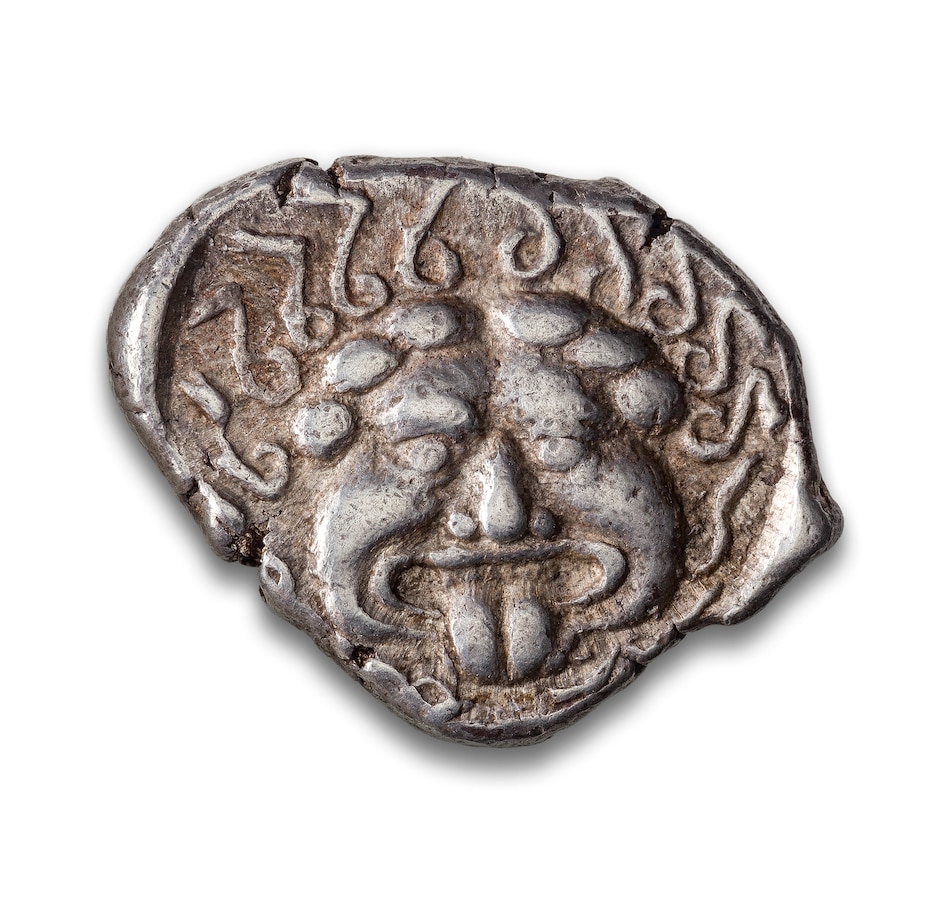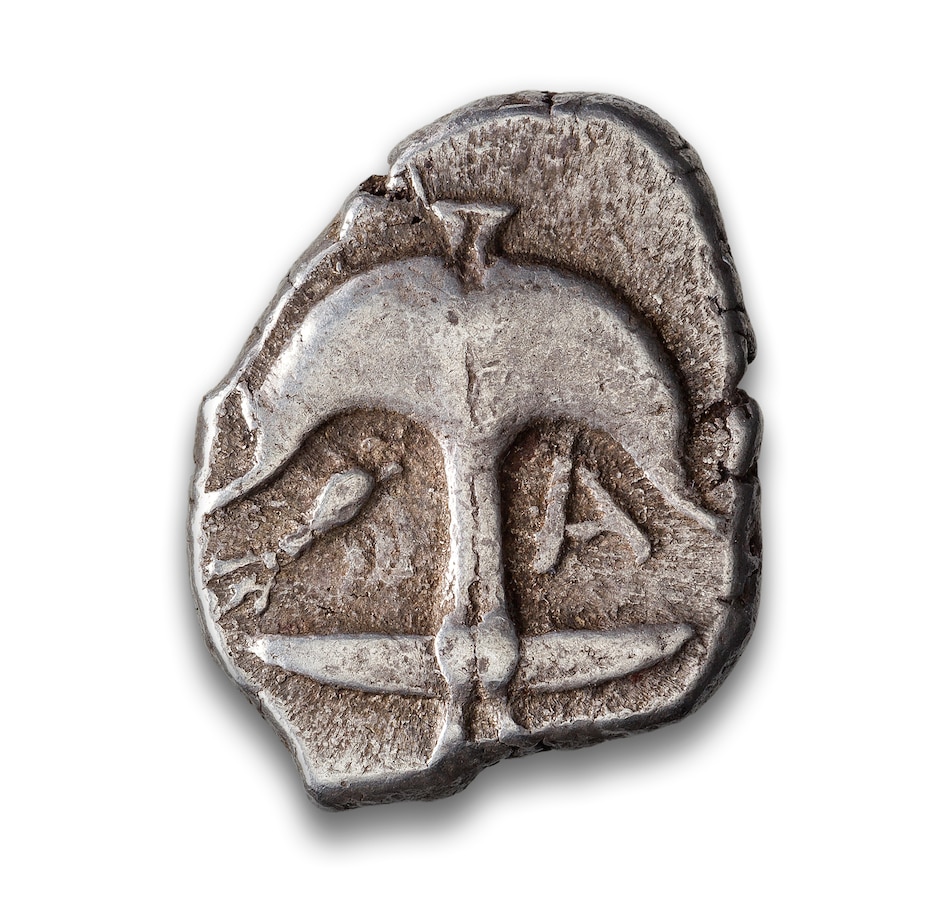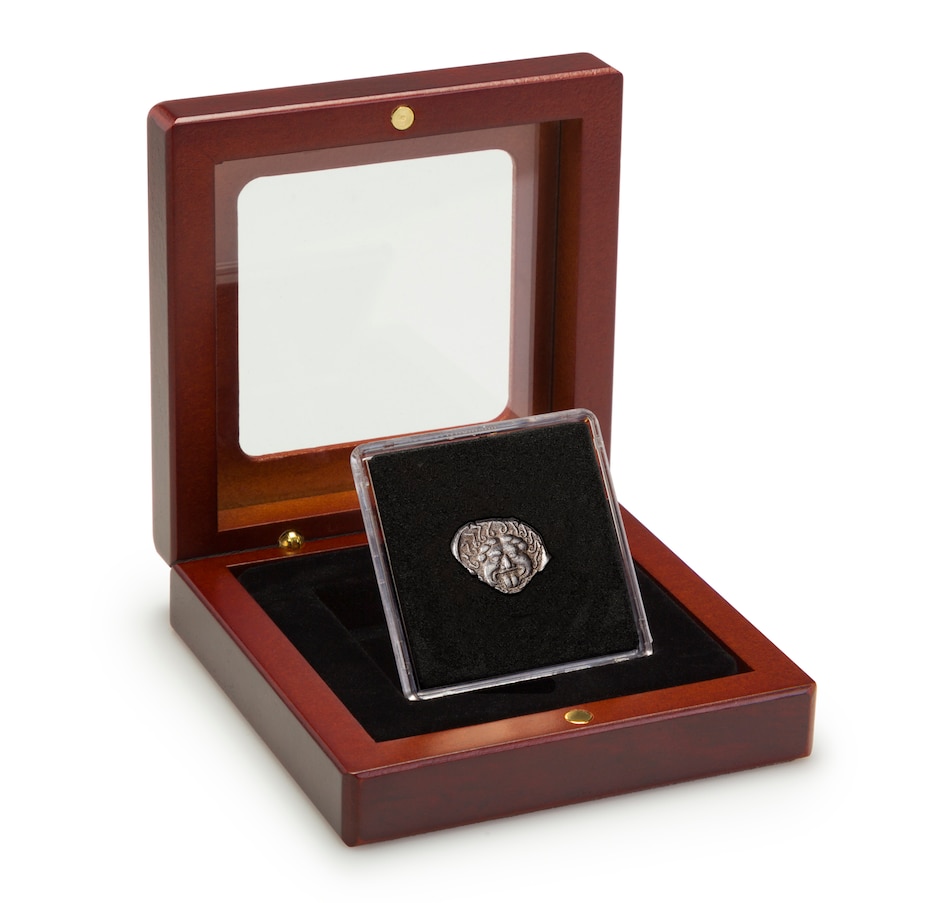Ancient Greek Gorgon Design Silver Drachm, City of Apollo, 450–350 BCE
Free Shipping
Product Overview
The obverse of this coin features a gorgon design, intended to recall a popular myth of the time and to protect its holder from evil. On some coins, the gorgon appears with defined snakes in her hair, while some feature stylized snakes or ringlets for hair. The obverse features an anchor, a crayfish, and usually the letter "A" for Apollonia.
Ancient Greek accounts of gorgons were centered on three sisters: Medusa, Sthenno and Euryale. The most widely known of these is Medusa, who could turn to stone any person who looked directly at her. Even after Medusa's head was removed by Perseus, the head could still be used as a weapon in battle against Perseus's enemies. While hideous to look at, images of gorgons have been embraced since antiquity as protection from enemies. They appear on coins, on jewellery, and in architecture. Many modern buildings including the Canadian Parliament buildings include gorgon sculptures.
Apollonia Pontika was founded in 610 BC by Ionian Greeks from Miletus and named after Apollo. A 30-foot high, 13-ton bronze statue of Apollo by the sculptor Kalamis guarded the harbor. When Roman legions under Marcus Lucullus sacked Apollonia in 72 BCE, the statue was taken to Rome but has since been lost in antiquity. The city was renamed Sozopol ("Salvation") in the fourth century CE when it accepted Christianity. It still exists today as a hamlet of 4,500 people (in current Bulgaria), where a yearly "Apollonia" arts festival continues its tradition and history.
Includes:
• Ancient Greek Gorgon Silver Drachm 450–350 BCE, City of Apollo








